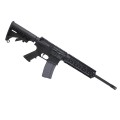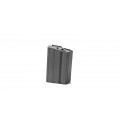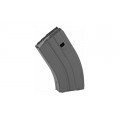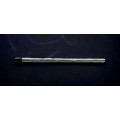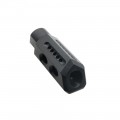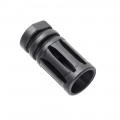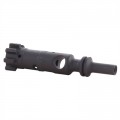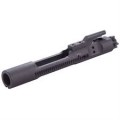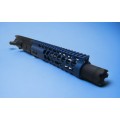There has been long running debate over which is the most effective round and what our ground troops should be using, 5.56mm x 45 or 6.8mm x 43 SPC.
Well, for me, that’s a no brainer – 6.8mm of course.
Why? Because of its terminal effects! In layman’s terms terminal ballistics is how the projectile reacts and what damage it causes when it strikes the target.
But don’t let me influence you in any way with my opinion; I’d like you to put your reasons forward as to which round you think is more suited for our troops.
5.56mm and 6.8mm Rounds: The Facts
There are many ballistic charts that you can view on the web, most showing that velocity is reasonably similar between the 5.56mm and 6.8mm rounds. Compare a 77gr 5.56mm projectile against the 115gr 6.8 and it is very close indeed, however kinetic energy is anywhere from 40-50% greater at shorter ranges, and up to 35% out to 600 yards.
The 6.8 SPC round has the same energy at 250 yards as the M855 has at the muzzle. At 600 yards it has the same energy as a 7.62mm M43 at 275 yards, M193 at 250 yards and M855 at 375 yards. Since the 6.8mm is of a larger calibre and greater sectional density than the 5.56mm, it will use this energy more effectively when producing terminal damage. Performance can be increased slightly by using 110gr ammunition, giving you more velocity and less bullet drop over range.
The lower velocity of the 115gr ammunition combined with more kinetic energy makes this round less susceptible to deflection from soft cover such as foliage, shooting through glass (in the case of vehicle interdictions) and chest rigs.
6.8mm upper receivers will fit AR-15 lowers, but you will need to change the bolt though and use specific 6.8 mags. I have fired 6.8 SPC ammunition from 5.56mm magazines but the heat that was generated expanded the mags – causing stoppages. The tolerances inside the mag are quite tight because the 6.8 cartridge is bigger in diameter. Although the calibre is larger, the difference in recoil is hardly evident and is quite controllable when engaged in rapid fire.
Ok, 6.8 SPC will significantly increase your chances of neutralization or incapacitation with a first round strike. It goes without saying that different types of projectiles will produce different results, and that shot placement is still the key no matter what type of round is used. However, we can’t always achieve this, so the introduction of a large caliber that fills the gap between 5.56mm and 7.62mm is vital for the safety of our troops and is necessary in our fight against terrorism.
My guess is that money is the overriding problem. But perhaps it would work out cheaper to supply something that will do the job more efficiently without wasting ammunition…or lives!!










